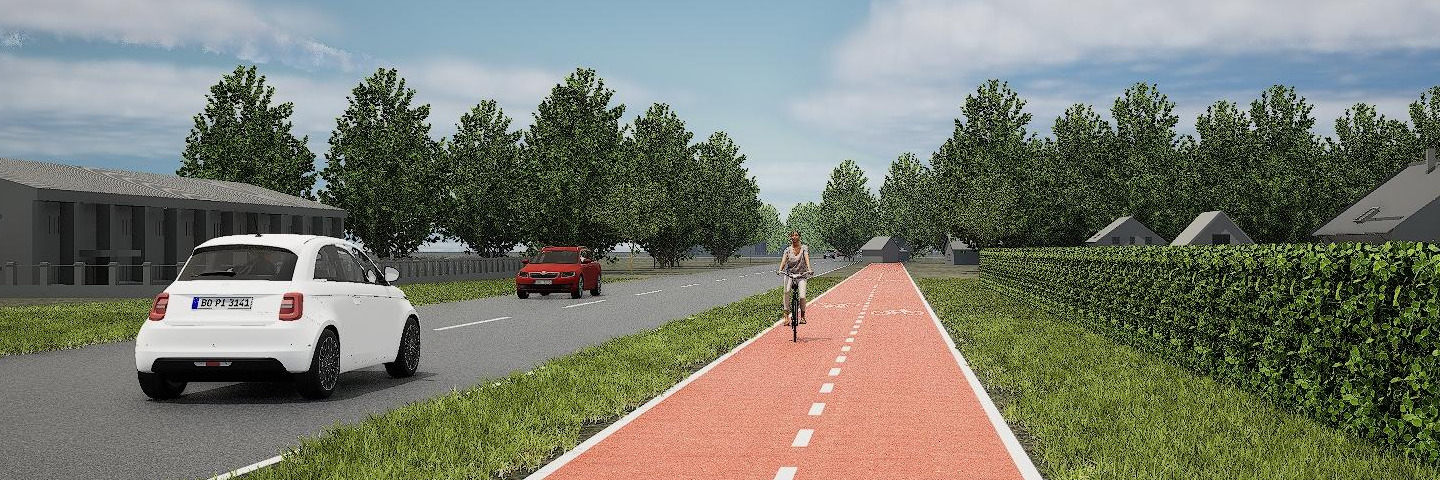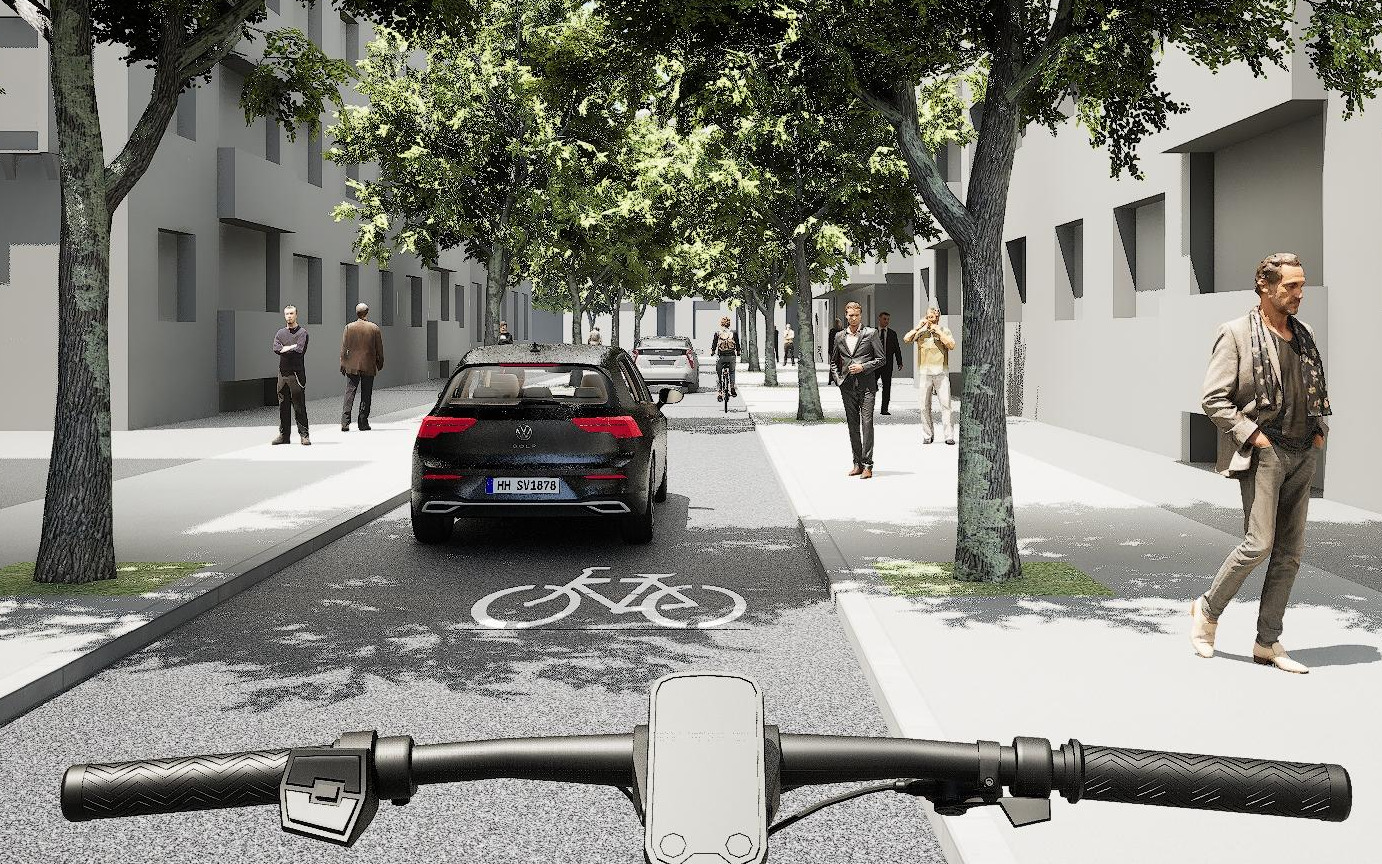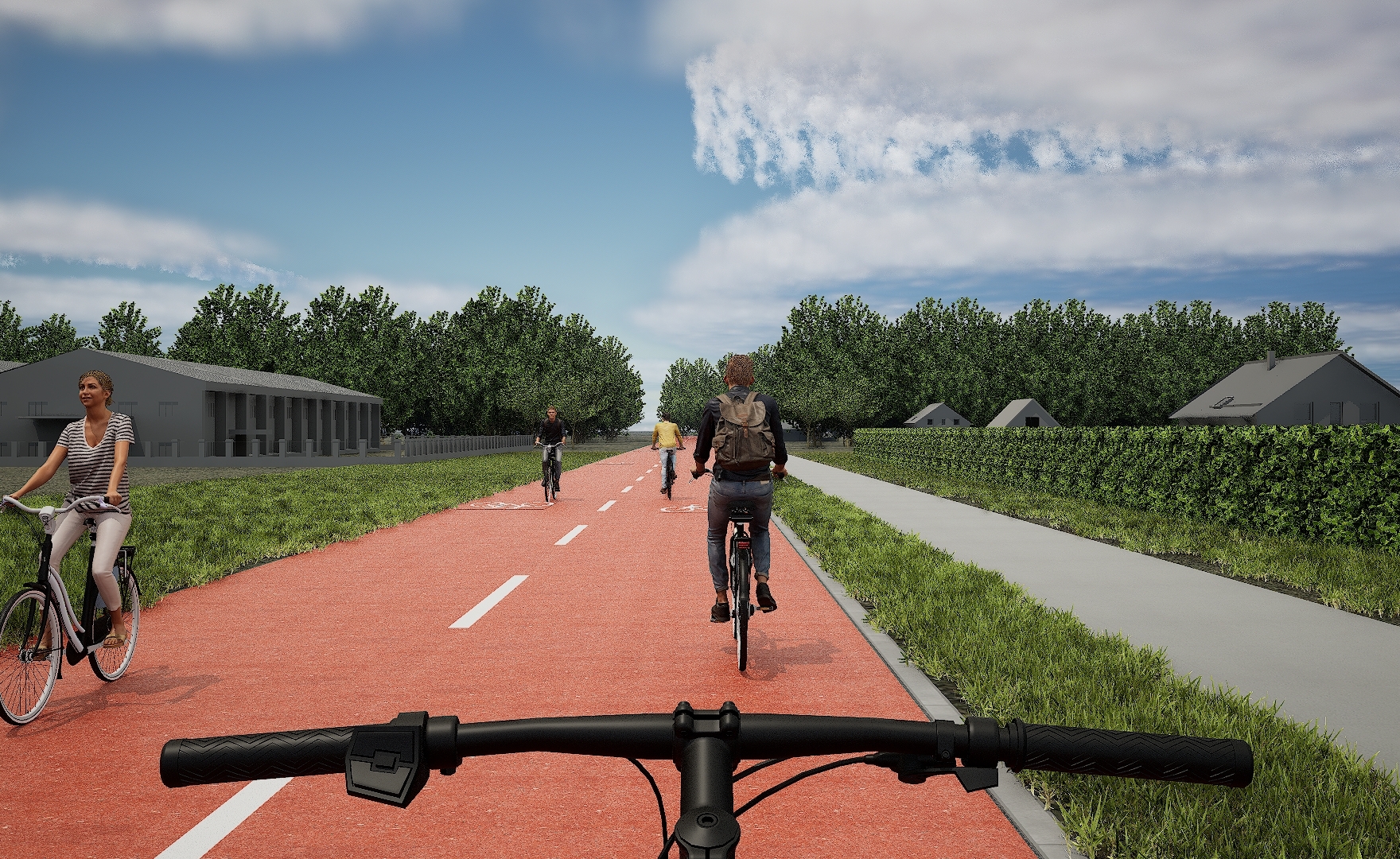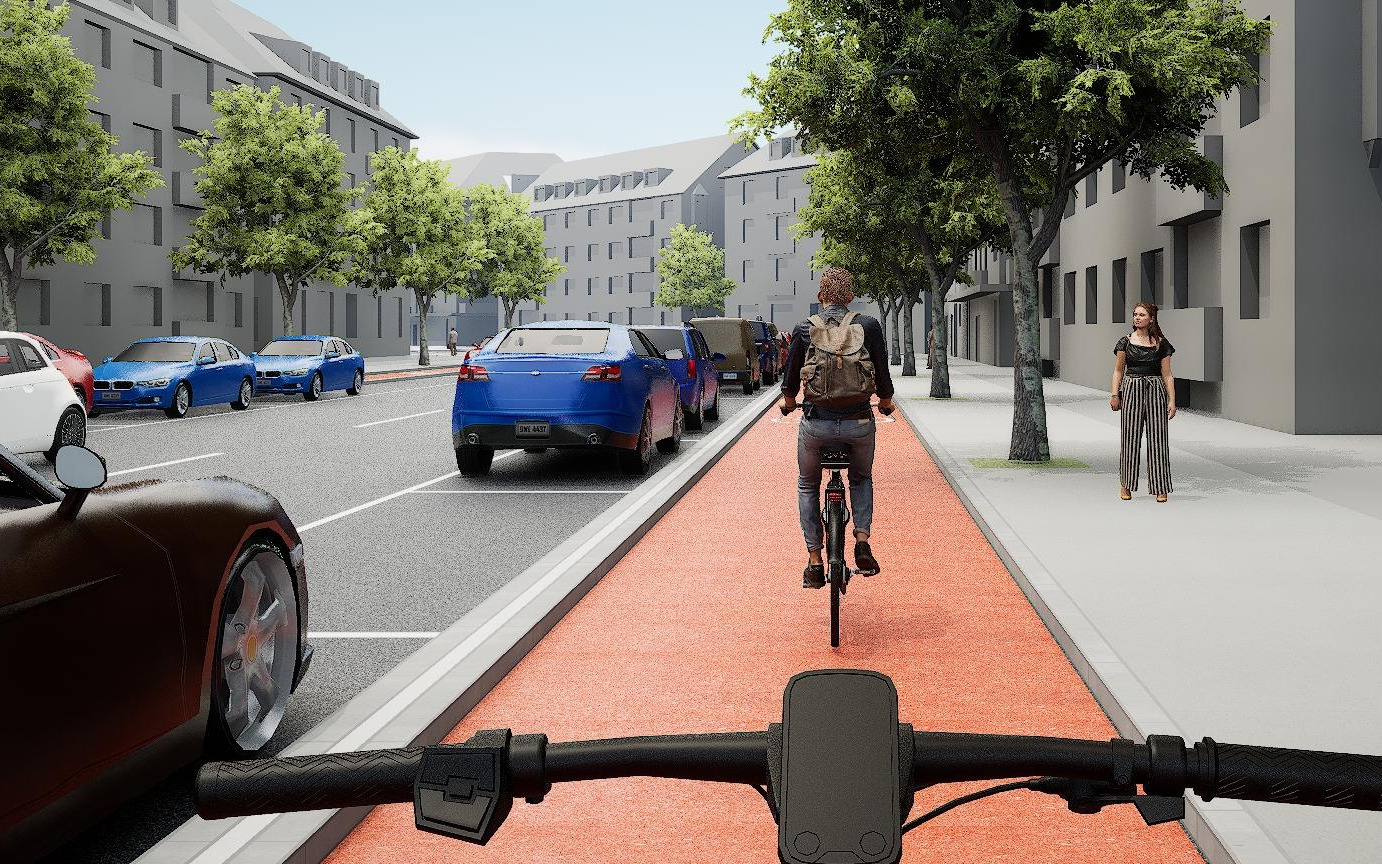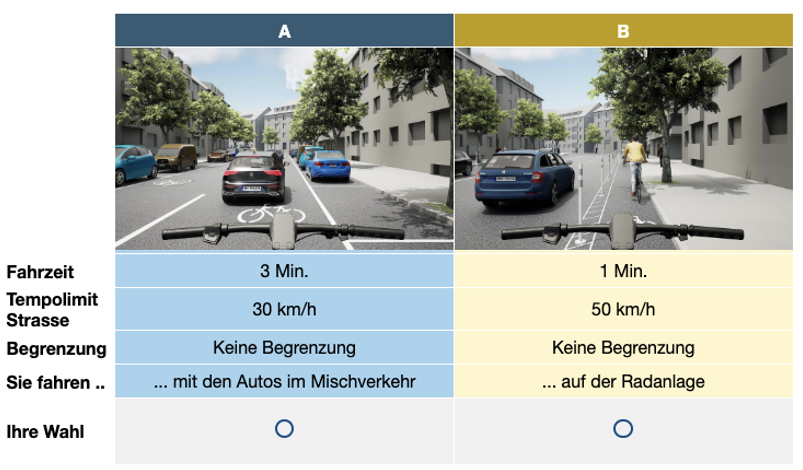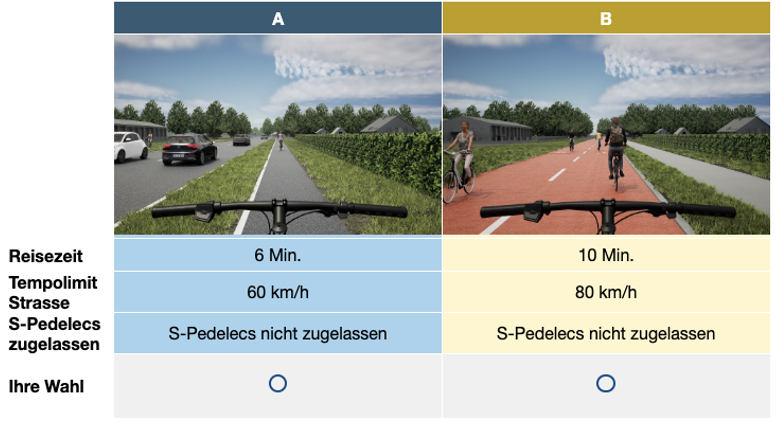Safe and efficient S-pedelec infrastructure
The project aims to analyse the acceptance of measures and regulations for fast e-bikes to promote road safety in the DACH region.
Amid the two-wheeler market’s clear trend towards electrification in, sales of S-Pedelecs are also increasing significantly. S-pedelecs travel at up to 45 km/h faster than conventional e-bikes (motor assistance up to 25 km/h). This makes them particularly suitable for longer distances that are normally covered by motorised vehicles. A safe integration of S-pedelecs into the existing infrastructure, which is accepted by all road users, is a challenge that different countries face.
This project takes a user-centered approach to better understand road users’ acceptance of different regulations covering the integration of S-pedelecs into the mobility system from the perspective of S-pedelec riders as well as other road users.
The project aims to develop scientifically sound recommendations to enable the safe integration of S-pedelecs into the existing mobility system. To this end, the following goals will be pursued: (1) analyze the similarities and differences in existing regulations across different countries, (2) identify key factors influencing the acceptance of S-Pedelecs through different lenses, (3) identify s-pedelec riding behaviour and contrast it against E-Bike riding behaviour.
In the first phase of the project, an analysis of the current situation is conducted by Salzburg Research and a collection of legal, organizational and technical regulations is compiled.
In the second part of the project, a quantitative and qualitative acceptance analysis will be carried out by the FHNW. At the Institute for Market Supply and Consumer Decision-Making at the School of Applied Psychology, a quantitative acceptance analysis will be carried out using online focus groups, consisting out of S-pedelec riders and other road users.
The transport and mobility research group at the School of Architecture, Construction and Geomatics will conduct a quantitative acceptance analysis in Germany, Austria and Switzerland using an online panel.
The survey consists of two parts: cyclists, e-bike riders and S-pedelec riders take part in an image-based stated preference route choice experiment as part of a web-based survey. The images are generated on the basis of an experimental design and visualised using ESRI City Engine and Unreal.
Next, a simulator study will be carried out in Germany to compare the cycling behaviour of e-bike riders and S-pedelec riders on different cycling facilities (speed, overtaking behaviour).
Finally, the results and recommendations will be discussed with experts active in the field of transport and active mobility planning.
Financing: | |
Project duration: | 1.1.2024 – 29.2.2024 |
Project manager: | |
Project co-worker: | HABG: Elia Ferrari, Wissam Wahbeh |
Keywords: | Survey, Stated Preference, Simulator, Visualisation, Street Design, Cycling Infrastructure |
